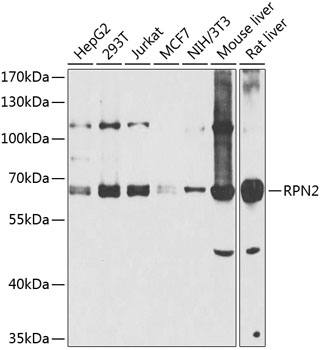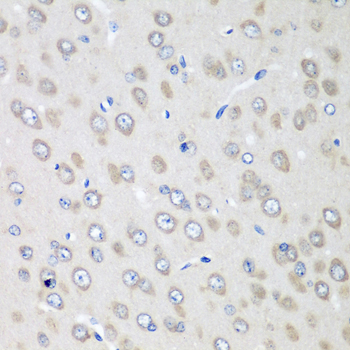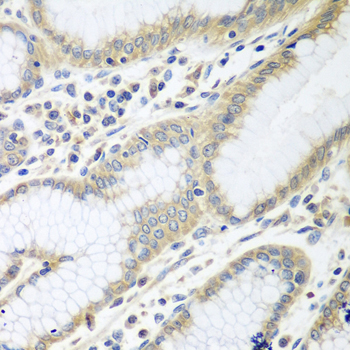-
Product Name
RPN2 Polyclonal Antibody
- Documents
-
Description
Polyclonal antibody to RPN2
-
Tested applications
WB, IHC
-
Species reactivity
Human, Mouse, Rat
-
Alternative names
RPN2 antibody; RIBIIR antibody; RPN-II antibody; RPNII antibody; SWP1 antibody; ribophorin II antibody
-
Isotype
Rabbit IgG
-
Preparation
Antigen: Recombinant fusion protein containing a sequence corresponding to amino acids 360-540 of human RPN2 (NP_002942.2).
-
Clonality
Polyclonal
-
Formulation
PBS with 0.02% sodium azide, 50% glycerol, pH7.3.
-
Storage instructions
Store at -20℃. Avoid freeze / thaw cycles.
-
Applications
WB 1:500 - 1:2000
IHC 1:50 - 1:100 -
Validations

Western blot - RPN2 Polyclonal Antibody
Western blot analysis of extracts of various cell lines, using RPN2 antibody at 1:1000 dilution.Secondary antibody: HRP Goat Anti-Rabbit IgG (H+L) at 1:10000 dilution.Lysates/proteins: 25ug per lane.Blocking buffer: 3% nonfat dry milk in TBST.Detection: ECL Basic Kit .Exposure time: 60s.

Immunohistochemistry - RPN2 Polyclonal Antibody
Immunohistochemistry of paraffin-embedded rat brain using RPN2 antibody at dilution of 1:100 (40x lens).

Immunohistochemistry - RPN2 Polyclonal Antibody
Immunohistochemistry of paraffin-embedded human stomach using RPN2 antibody at dilution of 1:100 (40x lens).
-
Background
Subunit of the oligosaccharyl transferase (OST) complex that catalyzes the initial transfer of a defined glycan (Glc(3)Man(9)GlcNAc(2) in eukaryotes) from the lipid carrier dolichol-pyrophosphate to an asparagine residue within an Asn-X-Ser/Thr consensus motif in nascent polypeptide chains, the first step in protein N-glycosylation. N-glycosylation occurs cotranslationally and the complex associates with the Sec61 complex at the channel-forming translocon complex that mediates protein translocation across the endoplasmic reticulum (ER). All subunits are required for a maximal enzyme activity.
Related Products / Services
Please note: All products are "FOR RESEARCH USE ONLY AND ARE NOT INTENDED FOR DIAGNOSTIC OR THERAPEUTIC USE"
